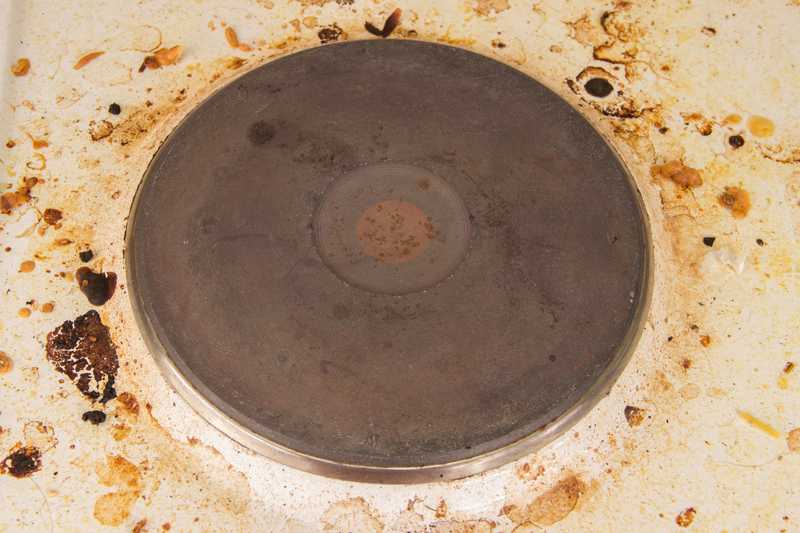Easy and Efficient Methods to Clean Window Sill Mould
Posted on 11/09/2025
Easy and Efficient Methods to Clean Window Sill Mould
Are unsightly black spots creeping across your window sills? Mould on window sills is a common nuisance in homes, especially in rooms prone to humidity such as kitchens and bathrooms. Not only is mould unpleasant and damaging to your window frame, but it can also pose risks to your health. The good news is that cleaning window sill mould can be straightforward with the right approach. In this comprehensive guide, you'll discover easy and efficient methods to remove mould from your window sills and keep it at bay--using simple, effective steps.
Why Does Mould Grow on Window Sills?
Understanding why mould develops on window sills is the first step to ensuring long-lasting cleanliness. Mould thrives in moist, poorly ventilated environments. Condensation on windows, leaky windows, or high indoor humidity are the main culprits. Wood, uPVC, and metal window sills can all harbour mould when they stay damp for extended periods.
Common Causes of Window Sill Mould
- Condensation: Sudden temperature drops and poor insulation lead to moisture collecting on window glass and sills.
- Poor Ventilation: Limited airflow in rooms causes humidity to linger, creating an ideal environment for mould.
- Leaking Windows: Gaps or damaged seals allow rainwater to seep into the sill and frame.
- Lack of Regular Cleaning: Dirt and dust act as organic food for mould spores, accelerating their spread.

The Health Risks of Mould on Window Sills
When left untreated, mould on window sills can cause more than cosmetic issues. The spores can trigger allergic reactions, asthma, respiratory problems, and other health concerns, especially in children, elderly people, and those with weakened immune systems.
- Allergy Symptoms: Runny nose, sneezing, and itchy eyes.
- Respiratory Issues: Coughing, wheezing, and difficulty breathing.
- Skin Irritation: Rashes and irritation from contact with mould spores.
Essential Safety Precautions Before Cleaning
Before tackling mould on your window sills, protect yourself and your home by taking these safety measures:
- Wear gloves, a mask (preferably N95), and goggles to avoid direct contact with mould.
- Open windows for ventilation or use fans to limit spore spread indoors.
- Avoid dry brushing or vacuuming dry mould; this can send spores airborne.
- Dispose of used cloths and sponges after cleaning or wash them in hot water.
Easy and Efficient Methods to Clean Window Sill Mould
With the basics covered, let's explore the most effective methods for cleaning mould from window sills. These approaches use readily available household items or gentle commercial products to fight stubborn spores and restore your sills to their former cleanliness.
1. White Vinegar Solution: An All-Natural Mould Remover
White vinegar is a natural disinfectant and one of the simplest yet powerful solutions for removing window mould.
- Fill a spray bottle with undiluted white vinegar.
- Spray generously over the affected window sill areas.
- Let it sit for at least 1 hour to penetrate and break down the mould.
- Wipe away the mould with a damp microfiber cloth. Scrub gently for stubborn patches.
- Rinse with a clean, damp cloth and dry the area thoroughly.
Tip: Vinegar can leave an odour which dissipates soon. Do not use vinegar on natural stone window sills as it may damage the surface.
2. Baking Soda Paste: Safe, Gentle and Effective
If you're wary of strong-smelling solutions, baking soda is mildly abrasive and safe for most surfaces. It's especially useful on painted wooden window sills.
- Mix 1 tablespoon of baking soda with just enough water to create a thick paste.
- Spread the paste over mouldy patches and let it work for 15-20 minutes.
- Scrub using a soft brush or old toothbrush in circular motions.
- Wipe with a clean, damp cloth and allow the sill to dry completely.
Baking soda not only removes window sill mould but also helps prevent regrowth by absorbing moisture.
3. Commercial Mould Cleaners: Heavy Duty Help
For stubborn or extensive mould infestations, commercial mould removers may be necessary. Look for products specifically designed for household use, often containing bleach or antimicrobial agents.
- Always follow the manufacturer's instructions and wear protective gear.
- Apply the product and let it sit for the recommended time, typically 5-15 minutes.
- Scrub with a non-abrasive pad, then wipe away all residue with a damp cloth.
- Avoid mixing different chemical cleaners!
Pro Tip: Some commercial sprays are formulated to resist future mould build-up, offering longer-lasting protection on your sills.
4. Hydrogen Peroxide: A Powerful, Fizzing Cleaner
3% hydrogen peroxide is another excellent choice for cleaning window sill mould. It's antifungal, antibacterial, and safe for most non-porous surfaces.
- Pour hydrogen peroxide into a spray bottle.
- Spray directly on the mouldy window sill, ensuring all patches are covered.
- Let it fizz and tackle the spores for 10-15 minutes.
- Scrub away residue with a sponge or brush and wipe clean.
- Dry thoroughly to avoid remaining moisture.
Hydrogen peroxide removes stains left by mould and is less likely to fade paint compared to bleach.
5. Tea Tree Oil Solution: Natural Yet Potent
Tea tree oil is a natural fungicide with a fresh scent, effective against all types of window sill mould.
- Mix 1 teaspoon of tea tree oil with 1 cup of water in a spray bottle.
- Shake and spray generously on mouldy areas.
- Let sit for several hours or overnight for best results.
- Wipe with a damp cloth. Repeat if necessary for persistent mould.
This all-natural solution also works as a mould preventative if sprayed occasionally on sills.
6. Bleach Solution: The Strongest Defence (Use with Caution)
When other methods fail, bleach can be used to clean window sills with mould, especially on non-porous surfaces like tiles or uPVC.
- Mix 1 part household bleach with 3 parts water in a bucket or spray bottle.
- Apply to the affected window sill using a sponge or spray.
- Leave for 10-20 minutes, scrubbing if needed.
- Wipe clean with a damp cloth and ensure the area is well dried and ventilated.
Warning: Avoid mixing bleach with vinegar or ammonia, as this produces toxic fumes. Avoid bleach on wood or coloured sills, as it may cause fading or damage.
How to Prevent Window Sill Mould Returning
Once you have removed window sill mould, make sure it stays away for good! These prevention tips are easy to follow and very effective in keeping your window sills safe from recurring mould problems.
Regular Cleaning Routine
- Wipe window sills weekly with a damp microfiber cloth to remove dust and condensation.
- Regularly check behind and beneath curtains or blinds where moisture may collect.
Improve Ventilation
- Open windows daily for a few minutes, even in winter, to allow fresh air circulation.
- Install extractor fans in kitchens and bathrooms to reduce humidity.
- Consider a dehumidifier for persistently damp rooms.
Address Moisture and Leaks
- Check and repair cracked window frames or deteriorating seals promptly.
- Use double glazing or thermal curtains to reduce condensation buildup.
- Avoid drying laundry indoors near windows whenever possible.
Natural DIY Prevention Sprays
- Spray sills occasionally with diluted vinegar or tea tree oil solutions to deter future mould spores.
- Baking soda can be sprinkled and vacuumed up to absorb lingering moisture.

Frequently Asked Questions About Cleaning Window Sill Mould
Can Mould on Window Sills Be Harmful?
Yes, if left untreated, mould on window sills can affect indoor air quality and trigger allergies, especially in sensitive individuals.
Should I Replace Mouldy Window Sills?
If the mould is severe and has deeply penetrated wooden sills or caused rot, replacement may be required. However, most cases can be remedied with the methods above.
Is Professional Remediation Needed?
For large or persistent outbreaks, or if mould covers a wide area (over one square meter), consider calling a professional. Minor to moderate window sill mould can be safely tackled in most homes following precautions.
Can I Paint Over Mould to Hide It?
Never paint over visible mould! This just traps spores beneath the surface, allowing mould to return and potentially worsen. Always remove and disinfect mould growth first.
Conclusion: Keep Your Windowsill Clean and Mould-Free
With these easy and efficient methods to clean window sill mould, you can restore your windows to their original state and protect your household from health risks. The key is to act quickly, use safe and effective cleaning solutions, and keep your home well-ventilated to prevent recurrence.
Don't let window sill mould compromise the comfort or value of your home. Try these proven cleaning techniques for a sparkling, healthy living environment today!
- Quick Action: Tackle mould as soon as you spot it--the sooner, the easier to remove.
- Thorough Cleaning: Use natural or commercial cleaners and proper protective gear.
- Long-term Prevention: Maintain a regular cleaning routine and address sources of moisture.
Remember: With the right knowledge, cleaning mould off window sills can be easy, efficient, and safe. Say goodbye to damp, unsightly windows--your home deserves it!





